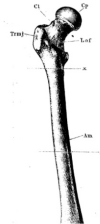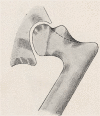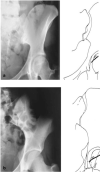The history of femoroacetabular impingement
- PMID: 33005396
- PMCID: PMC7502857
- DOI: 10.1302/2046-3758.99.BJR-2020-0003
The history of femoroacetabular impingement
Abstract
Aims: Femoroacetabular impingement (FAI) describes abnormal bony contact of the proximal femur against the acetabulum. The term was first coined in 1999; however what is often overlooked is that descriptions of the morphology have existed in the literature for centuries. The aim of this paper is to delineate its origins and provide further clarity on FAI to shape future research.
Methods: A non-systematic search on PubMed was performed using keywords such as "impingement" or "tilt deformity" to find early anatomical descriptions of FAI. Relevant references from these primary studies were then followed up.
Results: Although FAI has existed for almost 5,000 years, the anatomical study by Henle in 1855 was the first to describe it in the literature. The relevance of the deformity was not appreciated at the time but this triggered the development of further anatomical studies. Parallel to this, Poland performed the first surgical correction of FAI in 1898 and subsequently, descriptions of similar procedures followed. In 1965, Murray outlined radiological evidence of idiopathic cam-type deformities and highlighted its significance. This led to a renewed focus on FAI and eventually, Ganz et al released their seminal paper that has become the foundation of our current understanding of FAI. Since then, there has been an exponential rise in published literature but finding a consensus, especially in the diagnosis of FAI, has proven to be difficult.
Conclusion: Current research on FAI heavily focuses on new data, but old evidence does exist and studying it could be equally as important in clarifying the aetiology and classification of FAI.Cite this article: Bone Joint Res 2020;9(9):572-577.
Keywords: Femoroacetabular impingement; History.
© 2020 Author(s) et al.
Figures



References
-
- Ganz R, Parvizi J, Beck M, et al. . Femoroacetabular impingement: a cause for osteoarthritis of the hip. Clin Orthop Relat Res. 2003(417):112–120. - PubMed
-
- Snow SW, Keret D, Scarangella S, Bowen JR. Anterior impingement of the femoral head: a late phenomenon of Legg-Calvé-Perthes’ disease. J Pediatr Orthop. 1993;13(3):286–289. - PubMed
-
- Ganz R, Bamert P, Hausner P, Isler B, Vrevc F. [Cervico-acetabular impingement after femoral neck fracture]. Unfallchirurg. 1991;94(4):172–175. (Article in German) - PubMed
-
- Siebenrock KA, Wahab KHA, Werlen S, et al. . Abnormal extension of the femoral head epiphysis as a cause of cam impingement. Clin Orthop Relat Res. 2004(418):54–60. - PubMed

